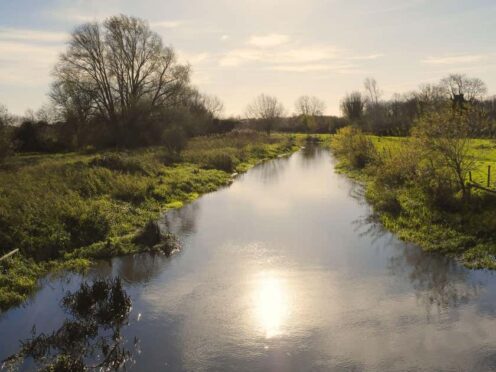
Farmers should get stronger incentives to reduce fertilisers, keep livestock and crops away from waterways and plant trees to cut river pollution, a report urges.
The report on reviving England’s struggling polluted rivers also calls for better regulation of sewage, particularly targeting failing treatment plants at river headwaters.
And it calls for connecting up rivers and floodplains, by removing barriers such as weirs and restoring ponds, canals and wetlands to improve the resilience of freshwater habitats, which also face the growing threat of climate change.
England’s rivers are in a “dire state”, experts warn, with no single waterway assessed as being in good overall condition in the face of pollution from agriculture, sewage and roads, with pollutants including PFAs – long-lasting toxins known as “forever chemicals”.

Just 15% of the country’s rivers are considered to be in good ecological condition with healthy wildlife populations, official assessments show.
The Environment Department (Defra) asked the British Ecological Society (BES) to bring together almost 40 experts to draw up priorities for restoring England’s polluted freshwaters and meeting targets for water quality and nature set out in the Environment Act 2021.
In a report published on Friday, the experts say tackling agricultural runoff is a priority, as the sector is responsible for 40% of freshwater pollution – higher even than water companies which cause 36% of the problem in rivers.
It urges better incentives for regenerative agriculture, such as reducing the use of fertilisers, pesticides and herbicides, farming back from rivers, fencing off watercourses to keep livestock out and planting woodlands or leaving buffers of rough grassland along waterways to reduce runoff and pollution.
The report argues the highest payments should be given for undertaking more challenging actions that provide the greatest benefits, and says farmers need clear, independent advice on delivering environmental sustainability.
With farmland covering 68% of England, improvements to agricultural practices to minimise pollution are likely to deliver the greatest and most widespread benefits, the report says.
Rob Booth, senior policy officer at the British Ecological Society, said: “As our report recognises, land management actions to improve water quality are already financially rewarded in England through various schemes and offers, so the question is how to improve uptake.
“The report states that such actions should be ‘rewarded appropriately’ and given growing societal concern about cleaning up England’s rivers, such actions would surely resonate with the public.”

Water companies have been the focus of much of the public concern about the state of England’s rivers, and the report calls for better regulation and improvements to infrastructure to reduce sewage overflows into waterways.
Failing sewage plants should be targeted as a priority, especially those in headwaters where improving water quality can help the entire length of the river, as should preventing spills that are not caused by overflows emptying into rivers to prevent drains backing up in heavy rain.
Making rivers and floodplains more connected will boost habitats and help them function better, through measure such as as reducing embankments, farming further back from rivers and removing barriers such as weirs.
The report warned barrier removal was currently not being done in a strategic way, for example dams or weirs being removed upstream but not downstream.
Water systems can be connected by creating new ponds, resurrecting infilled “ghost ponds” and focusing on smaller streams which require greater protection, while reducing abstraction can help improve water quality.
The experts also call for sustained investment to improve monitoring the state of nature in England’s rivers, streams and lakes, without which it will be impossible to know if targets are being met and to accurately trace sources of pollution.
Hazel Norman, chief executive of the British Ecological Society (BES), said: “From shocking footage of sewage spills to in-depth reports, the dire state of England’s freshwaters has never been more visible to us.
“The Government knows action needs to be taken and has set out vital targets for water quality and biodiversity, but achieving these goals is far from easy, with numerous interlinked pressures threatening our fresh water.
“The BES’s new report arms Defra with the ecological expertise needed to understand the pressures on our freshwater environments and sets out clear priority actions to turn the tide of biodiversity loss.”
Dr Emma Jardine, biodiversity pressures lead scientist at Defra, said: “The British Ecological Society’s report is helping us to build our understanding of the pressures on freshwater biodiversity and the actions that will be most impactful for target delivery.”

Enjoy the convenience of having The Sunday Post delivered as a digital ePaper straight to your smartphone, tablet or computer.
Subscribe for only £5.49 a month and enjoy all the benefits of the printed paper as a digital replica.
Subscribe